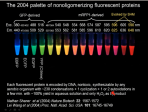 00:33:00
00:33:00
Molecules Against Cancer or for Long-Term Memory Storage
For cancer diagnosis and therapy, we are developing activatable cell-penetrating peptides (ACPPs), synthetic molecules with a novel amplifying mechanism for homing to diseased tissues. ACPPs are polycationic cell-penetrating peptides whose cellular ....
More details | Watch now 00:36:00
00:36:00
A Personal View of the History of Nuclear Magnetic Resonance in Biology and Medicine
In 1952, Felix Bloch and Edward Purcell were awarded the Nobel Prize in Physics for the description of the phenomenon of nuclear magnetic resonance (NMR). Over the years, NMR has been used in a wide range of fundamental studies in physics, and in the....
More details | Watch now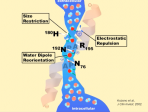 00:32:00
00:32:00
Aquaporin Water Channels _ From Atomic Structure to Malaria
Aquaporin (AQP) water channel proteins enable high water permeability in certain biological membranes. Discovered in human red cells but expressed in multiple tissues, AQP1 has been thoroughly characterized and its atomic structure is known. Expres....
More details | Watch now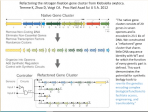 00:34:00
00:34:00
Synthetic Biology for Genetic Engineering in the 21st Century
Synthetic biologists seek to design, build, and test novel biological systems. We have chemically synthesized a bacterial genome (Mycoplsama mycoides, 1078Kb) and brought it to life by transplantation into the cytoplasm of a related species. We are....
More details | Watch now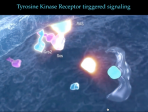 00:39:00
00:39:00
You can see a lot by observing: Optical Microscopy 2.0
Biological research and medicine were transformed by the invention and improvement of the optical microscope. Since the early 1990s, there has been another revolution in optical imaging, and manipulation of individual biological molecules and bio-mo....
More details | Watch now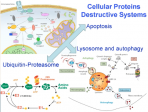 00:32:00
00:32:00
The Revolution of Personalized Medicine: Are We Going to Cure All Diseases and at What Price?
Many important drugs such as penicillin, aspirin, or digitalis, were discovered by serendipity - some by curious researchers who accidentally noted a "strange" phenomenon, and some by isolation of active ingredients form plants known for centuries to....
More details | Watch now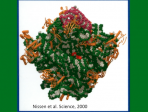 00:28:00
00:28:00
From the Structure of the Ribosome to New Antibiotics
Structural studies of the ribosome exemplify the evolution of structural studies in cell biology from the early negatively stained images of macromolecular assemblies in whole cells, to a detailed atomic understanding of the mechanisms of action of a....
More details | Watch now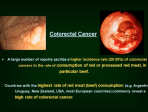 00:31:00
00:31:00
Infections Linked to Human Cancers: Mechanisms and Synergisms
Slightly more than 20% of the global cancer incidence is presently being linked to viral, bacterial, or parasitic infections. The mechanisms by which these agents mediate malignant transformation differ substantially. Some contribute directly, freq....
More details | Watch now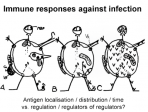 00:32:00
00:32:00
Why Do We Not Have a Vaccine Against HIV or Tuberculosis?
Analysis of the immune system is fascinating and progressing rapidly. As a field of medical enquiry, it has however, drifted and turned purely academic. This is because interest and appreciation of protective immunity in infectious disease medicine....
More details | Watch now 00:32:00
00:32:00
On The Road Toward an HIV Cure
Since the first cases of AIDS in 1981 and the identification of its etiological agent in 1983, much progress has been made in both the development of tools to prevent and treat HIV infection and the access to these tools. In particular, the wide arr....
More details | Watch now 00:30:00
00:30:00
Inheritance from Teratomas
The techniques and concepts that have resulted in the identification and isolation of embryonic stem cells have come from studies with mouse teratocarcinomas. Embryonic stem cells isolated from normal mouse embryos may be grown in tissue culture and....
More details | Watch now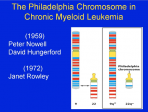 00:31:00
00:31:00
Forging a Genetic Paradigm for Cancer
It is now axiomatic that, no matter what its causes, cancer ultimately arises from the malfunction of genes. A number of clues prefigured this paradigm: the persistence of the malignant phenotype through countless cell divisions; the mutagenicity of....
More details | Watch now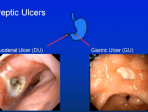 00:32:00
00:32:00
Man vs. Helicobacter _ The past 50,000 years and the next 50
The epidemiology of Helicobacter pylori continues to be an area of discovery and controversy in the 21st century. The transmission of this bacterium from mother to child allows Helicobacter DNA to mimic the evolution of maternal mitochondria DNA. B....
More details | Watch now 00:31:00
00:31:00
Deciphering Immunity by Making It Fail
Infectious microbes collectively represent the strongest selective pressure operating on our species, and over hundreds of millions of years, drove the evolution of the sophisticated immune system we have today. While the general outlines of immune ....
More details | Watch now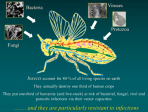 00:32:00
00:32:00
Innate Immunity: From Flies to Humans
Flies challenged with bacteria or fungi rapidly transcribe a battery of genes encoding potent antimicrobial peptides which oppose the invading microorganisms. Genetic analysis has identified two signaling cascades which control their expression: (1)....
More details | Watch now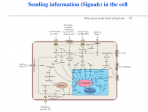 00:31:00
00:31:00
Multiscale Simulations of the Functions of Biological Molecules
Despite enormous advances in structural studies of biological systems we are frequently left without a clear structure-function correlation and cannot fully describe how different systems actually work. This introduces a major challenge for computer....
More details | Watch now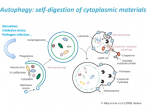 00:31:00
00:31:00
Genes and Proteins that Control Secretion and Autophagy
The broad outlines of the secretory pathway were established by pioneering EM and cell fractionation experiments conducted by George Palade in the 1960s. Beginning in the mid 1970s and early 80s, my laboratory isolated a series of conditionally leth....
More details | Watch now 00:37:00
00:37:00
Cosmic Rays: the Most Energetic Particles in the Universe
Astrophysical objects are able to accelerate atomic nuclei to energies 10^7 times more than man made accelerators such as LHC. _Particles arrive at earth from space with energies as great as 50 joules, a macroscopic energy in a microscopic particle.....
More details | Watch now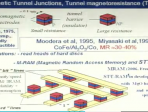 00:39:00
00:39:00
The World of Spintronics: Electrons, Spins, Computers and Telephones
Spintronics is a new field of research which exploits the influence of the electron spin on electronic transport. It is well known for the giant magnetoresistance of the magnetic multilayers and its application to increase the capacity of the hard d....
More details | Watch now 00:32:00
00:32:00
The Big Challenges
During the entire 20th century, physical sciences have advanced to such a degree that we can extrapolate how they can be applied, even in a fairly distant future. Even if we leave open the (likely) possibility of spectacular new discoveries and inv....
More details | Watch now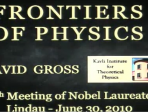 00:34:00
00:34:00
Frontiers of Physics
David discusses a few of the questions facing fundamental physics that might be answered before the 100th Lindau meeting in 2050.
More details | Watch now 00:32:00
00:32:00
The Looming World Shortage of Helium
The worldÍs supply of Helium gas comes primarily from alpha decay in rocks. The most abundant supply is in the American Southwest where it is trapped with methane is natural gas wells. That supply is estimated to last a mere 25 years. It took 4.7 bi....
More details | Watch now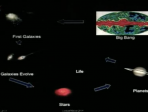 00:28:00
00:28:00
The History of the Universe, from the Beginning to the Ultimate End
John summarizes the history of the universe, from the Big Bang through the formation of galaxies and the Solar System, and the history of the Earth and some of the special factors enabling the formation of life. Our future will be hot as the Sun ge....
More details | Watch now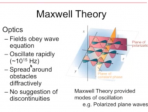 01:18:00
01:18:00
What is Quantum Optics?
The image of light waves as oscillating electromagnetic fields explains virtually all the phenomena of traditional optics. An awareness that these waves are somehow subdivided into quanta has however been with us since the early 20th century. The....
More details | Watch now
